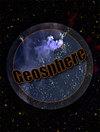用综合地球物理分析重温1899年阿拉斯加雅库特湾地震系列
IF 1.7
3区 地球科学
Q3 GEOSCIENCES, MULTIDISCIPLINARY
引用次数: 1
摘要
1899年的一系列大地震影响了阿拉斯加东南部靠近雅库塔和祛魅湾的地区。其中最大的一次是1899年9月10日发生的MW 8.2级地震,在雅库塔湾产生了约12米高的海啸和高达14.4米的同震隆起,这是迄今为止测量到的最大同震隆起。该地区的几个复杂的断层系统与雅库特地块与北美的碰撞和费尔韦瑟走滑系统的终止有关,但由于雅库特湾当地的断层不完整或绘制得很差,因此尚不清楚哪一个断层系统在1899年9月10日的事件中破裂。利用2012年8月收集的海洋地球物理数据,我们为雅库塔地区提供了一个改进的构造框架,提高了我们对地震危害的认识。我们将2012年153线公里的高分辨率多通道地震(MCS)反射数据与压缩高强度雷达脉冲(Chirp)剖面、盆地尺度MCS数据、2018年海底测深、已发表的大地测量模型和热年代学数据以及以前的同震隆起测量数据相结合,以更好地约束雅库塔湾地区的断层几何形状和地下结构。在我们的高分辨率数据中,我们没有观察到任何活动或隐藏的断层穿过Yakutat湾,这要求断层完全位于陆上或近岸。我们解释了Yakutat湾以东的陆上断层与Fairweather断层系统的跨震终止有关,形成了一系列呈现马尾状几何形状的展断层。海湾西侧逆冲断裂与雅库特地体逆冲下冲与北美碰撞有关。我们的研究结果包括更新的断层图,雅库塔湾的结构模型,以及对遗留地质同震隆起测量的不确定性的定量评估。此外,我们的研究结果表明,1899年9月10日的破裂可能与1899年9月4日早期雅库特地层逆冲事件的应力加载有关,其中9月10日的同震滑动主要发生在雅库特湾西北侧的Esker Creek系统上。与1899年事件相关的有限(~2米)同震或震后滑动发生在雅库塔湾以东的断层上。本文章由计算机程序翻译,如有差异,请以英文原文为准。
Revisiting the 1899 earthquake series using integrative geophysical analysis in Yakutat Bay, Alaska
A series of large earthquakes in 1899 affected southeastern Alaska near Yakutat and Disenchantment Bays. The largest of the series, a MW 8.2 event on 10 September 1899, generated an ~12-m-high tsunami and as much as 14.4 m of coseismic uplift in Yakutat Bay, the largest coseismic uplift ever measured. Several complex fault systems in the area are associated with the Yakutat terrane collision with North America and the termination of the Fairweather strike-slip system, but because faults local to Yakutat Bay have been incompletely or poorly mapped, it is unclear which fault system(s) ruptured during the 10 September 1899 event. Using marine geophysical data collected in August 2012, we provide an improved tectonic framework for the Yakutat area, which advances our understanding of earthquake hazards. We combined 153 line km of 2012 high-resolution multichannel seismic (MCS) reflection data with compressed high-intensity radar pulse (Chirp) profiles, basin-scale MCS data, 2018 seafloor bathymetry, published geodetic models and thermochronology data, and previous measurements of coseismic uplift to better constrain fault geometry and subsurface structure in the Yakutat Bay area. We did not observe any active or concealed faults crossing Yakutat Bay in our high-resolution data, requiring faults to be located entirely onshore or nearshore. We interpreted onshore faults east of Yakutat Bay to be associated with the transpressional termination of the Fairweather fault system, forming a series of splay faults that exhibit a horsetail geometry. Thrust and reverse faults on the west side of the bay are related to Yakutat terrane underthrusting and collision with North America. Our results include an updated fault map, structural model of Yakutat Bay, and quantitative assessment of uncertainties for legacy geologic coseismic uplift measurements. Additionally, our results indicate the 10 September 1899 rupture was possibly related to stress loading from the earlier Yakutat terrane underthrusting event of 4 September 1899, with the majority of 10 September coseismic slip occurring on the Esker Creek system on the northwest side of Yakutat Bay. Limited (~2 m) coseismic or postseismic slip associated with the 1899 events occurred on faults located east of Yakutat Bay.
求助全文
通过发布文献求助,成功后即可免费获取论文全文。
去求助
来源期刊

Geosphere
地学-地球科学综合
CiteScore
4.40
自引率
12.00%
发文量
71
审稿时长
6-12 weeks
期刊介绍:
Geosphere is GSA''s ambitious, online-only publication that addresses the growing need for timely publication of research results, data, software, and educational developments in ways that cannot be addressed by traditional formats. The journal''s rigorously peer-reviewed, high-quality research papers target an international audience in all geoscience fields. Its innovative format encourages extensive use of color, animations, interactivity, and oversize figures (maps, cross sections, etc.), and provides easy access to resources such as GIS databases, data archives, and modeling results. Geosphere''s broad scope and variety of contributions is a refreshing addition to traditional journals.
 求助内容:
求助内容: 应助结果提醒方式:
应助结果提醒方式:


